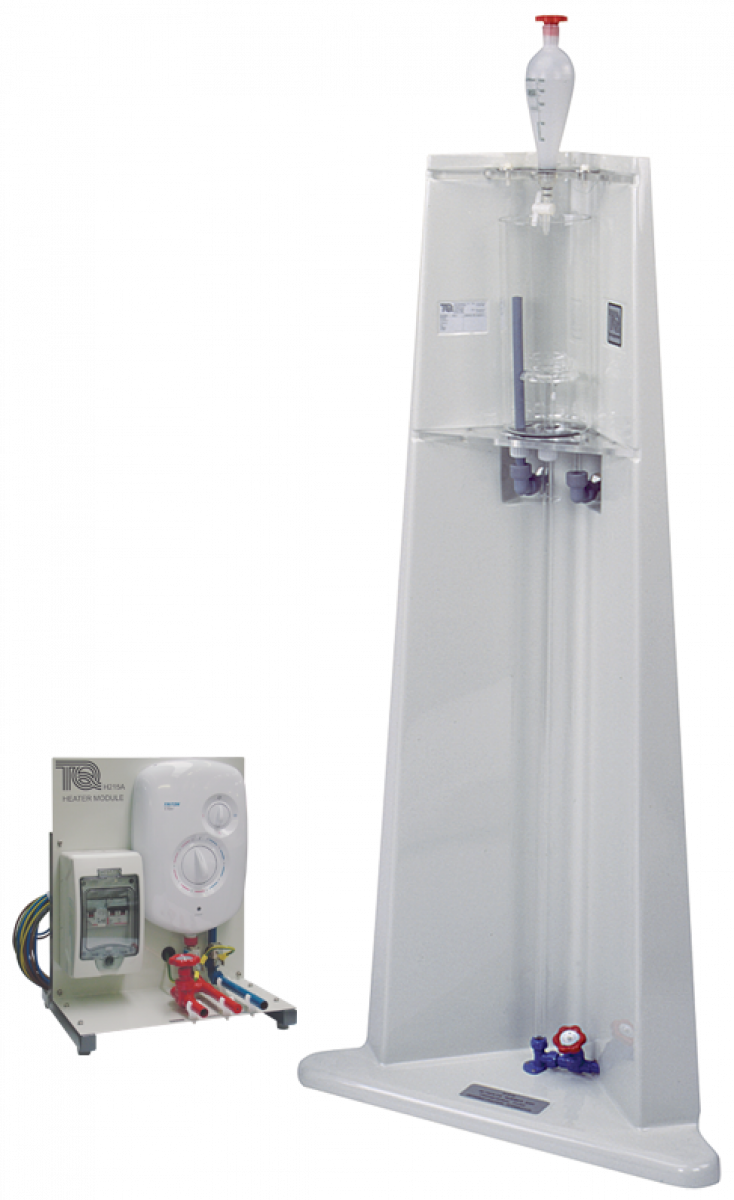Key features:
- Constant head reservoir and flow-smoothing parts for a smooth flow
- Uses dye injector system to show flow patterns
- Investigates Reynolds number at transition
- Clear tube and light-coloured shroud to help flow visualisation (see flow more clearly)
- Shows turbulent and laminar flow
- Optional heater module available for tests at different viscosities
- Ideal for classroom demonstrations and student experiments
Description:
- The apparatus consists of a precision-bore glass pipe (test tube) held vertically in a large shroud. The shroud is open at the front and the inside surface is light coloured. This allows the students to see the flow clearly.
- Water enters a constant head tank (reservoir) above the test tube and passes through a diffuser and stilling bed. It then passes through a specially shaped bell-mouth into the test tube. This arrangement ensures a steady, uniform flow at entry to the test tube.
- A thermometer measures the temperature in the constant head reservoir.
- A fixed overflow pipe in the reservoir connects to a suitable drain. At the bottom of the test pipe is a valve which controls the flow rate through the pipe, without disturbing the flow.
- Students collect a known quantity of water in a measured time to find the flow rate. Included is a measuring cylinder.
- To see the pattern of flow in the pipe, students use a dye injector (included). They use it to inject a fine filament of dye into the top of the tube. The dye injector is a dye reservoir connected to a fine hypodermic tube.
- The base of the apparatus has adjustable feet for levelling prior to use (included is a levelling device).
- The optional Heater Module (H215a) is a separate free-standing unit. It connects to the water supply line to heat the water, varying its temperature and viscosity.
- Controls on the module vary the electrical heat input and the flow rate, to give steady conditions over a range of temperatures.

